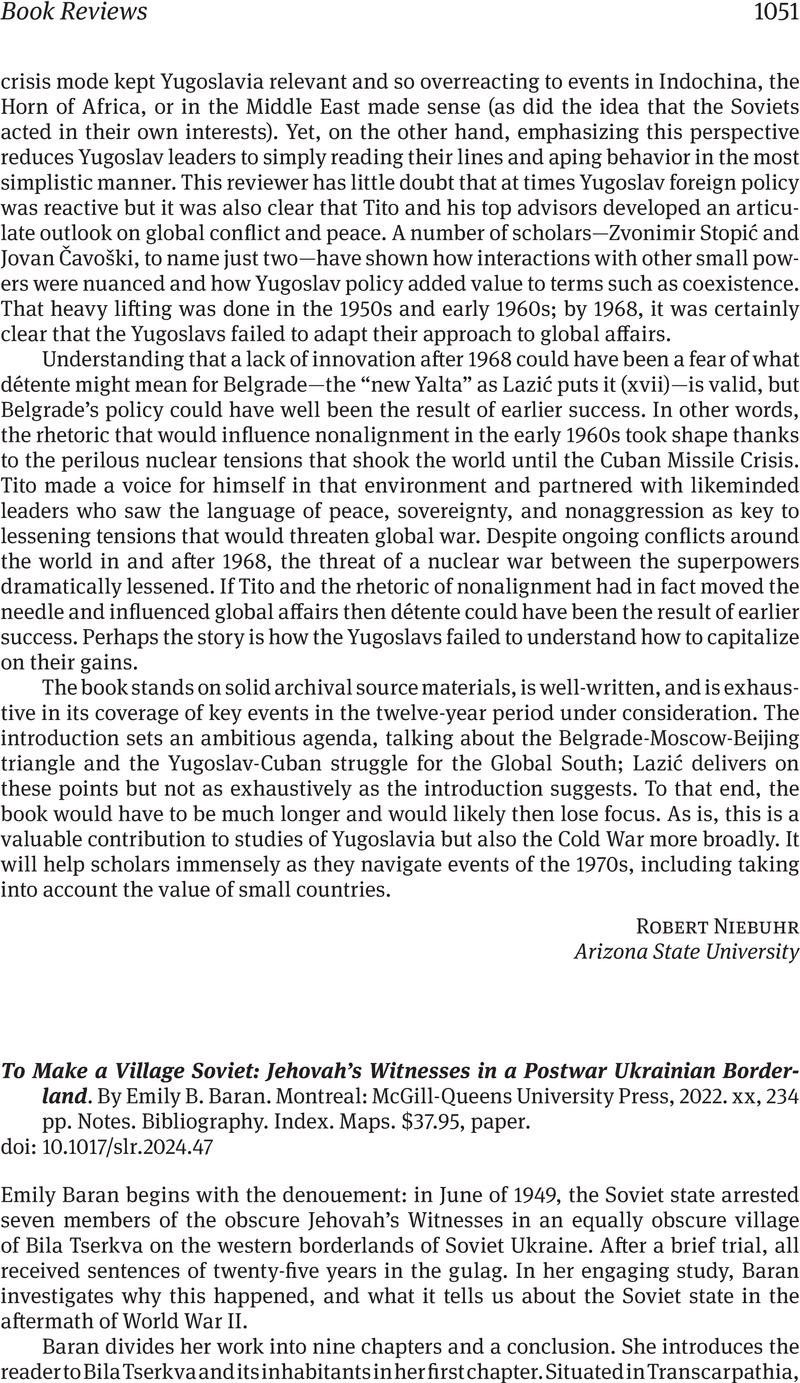No CrossRef data available.
Article contents
To Make a Village Soviet: Jehovah's Witnesses in a Postwar Ukrainian Borderland. By Emily B. Baran. Montreal: McGill-Queens University Press, 2022. xx, 234 pp. Notes. Bibliography. Index. Maps. $37.95, paper.
Review products
To Make a Village Soviet: Jehovah's Witnesses in a Postwar Ukrainian Borderland. By Emily B. Baran. Montreal: McGill-Queens University Press, 2022. xx, 234 pp. Notes. Bibliography. Index. Maps. $37.95, paper.
Published online by Cambridge University Press: 18 April 2024
Abstract
An abstract is not available for this content so a preview has been provided. Please use the Get access link above for information on how to access this content.

- Type
- Book Review
- Information
- Copyright
- Copyright © The Author(s), 2024. Published by Cambridge University Press on behalf of Association for Slavic, East European, and Eurasian Studies


